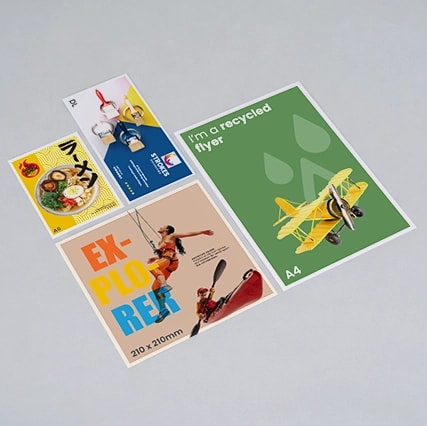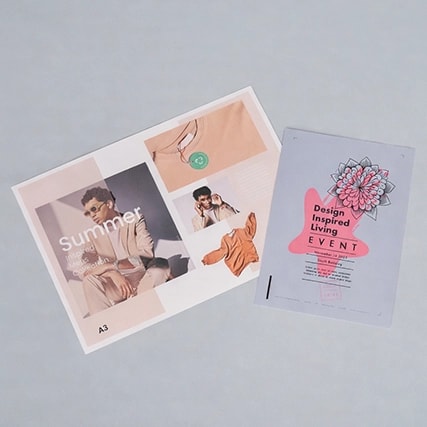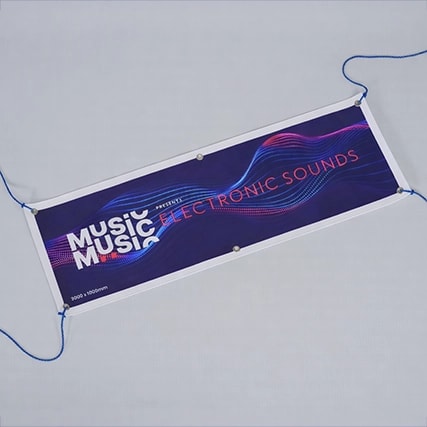
How to Explain Print Clearly to Customers Who Don’t Speak the Jargon
Clear communication is essential in any industry, but in print, it can be the difference between a successful order and a lost opportunity. Many customers know what they want their print to achieve, but they often cannot describe it using technical terms. As a print reseller, your role is to bridge that gap—translating their vision into accurate, achievable print specifications.
According to a PwC study on customer experience, 43 percent of consumers say they would pay more for greater convenience and clarity during the buying process. That means simplifying print conversations does not just build trust—it can directly influence buying decisions and customer loyalty.
Start by Listening to Outcomes, Not Terminology
Customers may not use the correct print terms, but they can usually describe what they want:
- “A thick, glossy leaflet like the ones at the cinema”
- “Something that opens like a small booklet”
- “A fold-out map-style piece for our event”
Instead of correcting terminology, ask open, clarifying questions:
- What do you want it to feel like?
- Where and how will this be used?
- How many do you need, and when?
By focusing on the intended use and outcome, you can recommend the right format, whether that is perfect-bound brochures, folded leaflets or display materials, and guide them toward the best result.
Break Down Key Print Concepts with Everyday References
Certain print terms are confusing to those outside the industry. You can simplify these concepts with real-world comparisons:
CMYK vs RGB - Explain that RGB is for screens and CMYK is for printed materials.
“That bright neon blue you see on a screen uses RGB. In print, we use CMYK inks, so the colour may look slightly different.”
Paper Sizes - Use objects they are familiar with:
“A4 is the size of a sheet from a home printer. A5 is half of that, used for leaflets or handouts. A3 is twice the size of A4, often used for posters.”
Digital vs Litho Printing - Offer relatable analogies:
“Digital printing is like a premium version of an office printer, fast and cost-effective for short runs. Litho is used for large volumes and gives excellent quality at scale.”
The goal is to translate print concepts into practical, tangible examples that customers can relate to, rather than expecting them to adopt technical language.
Use Visual Aids to Close the Gap
When words are not enough, visuals can provide clarity. A physical print sample kit allows customers to feel and compare paper weights, coatings, finishes and binding types, making the decision-making process faster and easier. We offer a selection of printed samples that you can share with your clients to support these conversations.
This approach works. Research from Justuno found that 93 percent of consumers consider visual appearance to be a key factor in purchase decisions. If a client can feel soft-touch lamination or see Scodix digital foil on a sample, they are more likely to choose it, often upgrading their original brief.
Use Simplicity to Support Ethical Upselling
Simplifying print language does not only help your customers, it creates more opportunities to add value. Once they understand the options available, it becomes easier to introduce enhancements that improve their final product.
Examples include:
- “You could use standard gloss, or soft-touch lamination if you want a more premium look and feel.”
- “If you're ordering 250, it may only cost a little more to print 500, and you'll have spares for future use.”
- “We can dispatch in three working days, or we can upgrade to guaranteed next-day delivery if timing is critical.”
Framing these as helpful suggestions, rather than add-ons, helps customers see the value clearly and make more confident decisions.
Offer Bespoke Solutions for Unique Projects
Some clients may ask for something that does not fit into the standard product range. This is not a limitation, it is an opportunity.
WTTB’s bespoke printing service allows you to deliver custom solutions tailored to your client’s unique needs. From unusual sizing and special stocks to advanced finishes such as foil stamping, embossing or intricate die-cuts, we can bring complex projects to life with the same level of care and quality as our core range.
The process is straightforward. Simply collect your client's requirements and submit a brief using our streamlined form. Our team will provide guidance, pricing and production options, allowing you to say yes to more business, even when the request is outside the usual specification.
Final Thoughts
Print does not have to be technical or intimidating. For many clients, the key to a successful print experience is working with someone who can listen carefully, translate their ideas into workable specifications and offer helpful guidance throughout the process.
As a reseller, your ability to simplify complex terminology, use clear examples and offer relevant visual tools sets you apart. This clarity builds confidence, increases the likelihood of repeat business, and positions you as a trusted expert, not just a provider.
Posted on June 13, 2025 by WTTB
Related topics:


